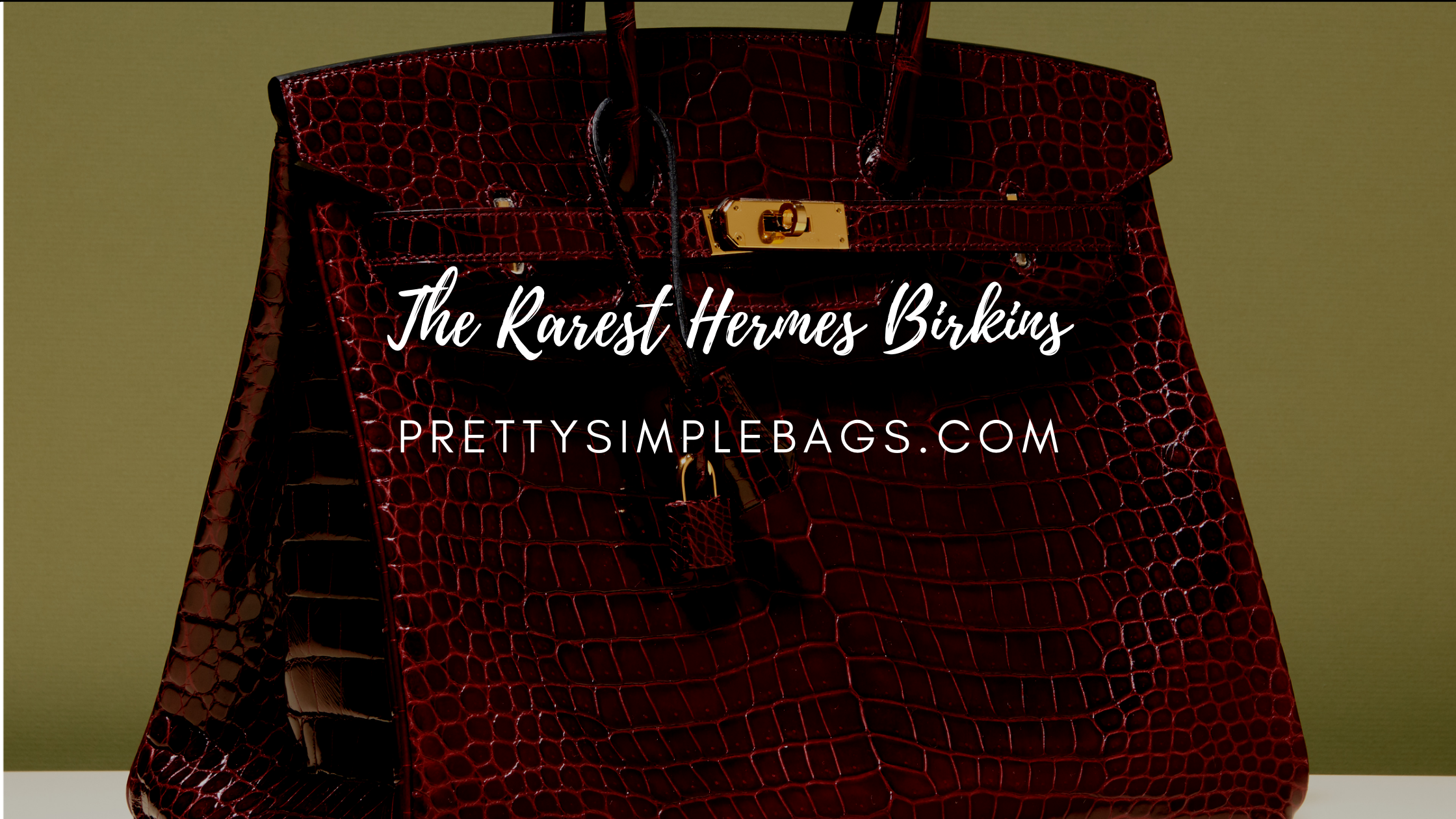It is common knowledge that the Hermes Birkin bag is as valuable as its weight in gold. However, this happens to be a huge understatement. The weight of the Birkin with no content is about two pounds; the equivalent weight in gold is about $37,500 today.

The most valuable handbag at an auction was sold for more than $370,000 at Christie’s auction in Hong Kong in June 2017. It was unsurprisingly a Hermes Birkin bag known as the Himalayan because of its albino-white crocodile fabric and diamond-encrusted palladium hardware which resembles the legendary mountain region.
Why is the Birkin so costly?
The bags are extremely rare. They are typically sold for $11,900 for the simple calfskin models and as high as $150,000 for the highly coveted alligator and crocodile trims. Production is very limited and there is no advertising for these bags.
A customer doesn’t just go to a Hermes boutique and request for a Birkin, not even when they have tens of thousands of dollars ready, because these bags are hardly in stock. A single master artisan handcrafts each bag and uses a serial number to indicate their work. In the days when waiting lists existed, they took as long as six years!
The Hermes Birkin is extremely rare today and it is almost impossible to buy one. The secondary market would be your best option, however, the prices are constantly increasing, which makes the Birkin bag one of the best investments you can possibly make. As a matter of fact, the Birkin has outvalued S&P 500 stocks and gold in the last 35 years, returning 14.2% annually, compared to 8.7% for stock and 1.5% for gold. And with Hermes recently eliminating the waitlist and further planning to reduce the already ultra-limited production, the prices are set to continue increasing.
You will likely come across Birkins with varying construction materials. The biggest factor in determining the value of a Birkin is the choice of leather. The following are the most common kinds of leather Hermes used to construct the Birkin:
Box Calf Leather: Box calf leather is extremely soft and smooth, usually the choice for constructing the Kelly. It is on the fragile side as the matte surface easily shows scratches and blemishes.
Ostrich Leather: Standing out among the other common leather options, ostrich leather with its large pores as soft touch is a famous model in the Birkin line. Ostrich Birkin joins box calf leather at the top of the Birkin price list and offers a classic and captivating look.
Clemence Leather: This is also a product of the calf, but is significantly different from Box Calf Leather. Clemence has a more grainy texture and has much more resistance to wear and tear, hence, it is an excellent option for everyday use.
Epsom Leather: Epsom has many similarities with Clemence, but has finer grains and is even more resistant to scratches. Maintaining Epsom Birkins is easy and they offer a great balance between aesthetics and functionality.
Togo Leather: Togo leather is also a product of the calf, but compared to Epsom and Clemence, the grains of Togo leather is softer and larger. It also has reasonable resistance to scratches, but it requires proper maintenance due to its softness.
The most coveted Birkin bags are the ones made out of the leather of top predators such as the crocodile and alligator. This also leads to the greatest confusion about Birkin bags, as it is common for people to mistake the crocodile for the alligator, and vice versa. However, there are identification features and notable differences that distinguish crocodile Birkins from their alligator counterparts.
Firstly, the habitat of alligators is freshwater while that of crocodiles is saltwater. Also, the skin of crocodiles has small pores close to the bottom of the scales; these pores are not present on alligators. Crocodiles are usually bigger than alligators, hence, they have bigger individual scales and are better for use in making bigger bags, such as 40 cm and 35 cm Birkins. Having more symmetrical and smaller scales, Alligator leather is often used for Kelly bags and small 30 cm Birkin bags.
Two major kinds of crocodile leather are used in producing the Birkin: Porosus crocodile (obtained from Australia and Asia) and Niloticus crocodile (obtained from the Nile River Valley). Hermes uses alligators from the Mississippi River Valley. It is extremely difficult to find crocodile Birkins in the primary market, and they are usually only sold to customers who spend at least six figures in the Hermes store.
In addition, the aesthetics and symmetry of the skin and scales also determine the desirability and price of Crocodile and Alligator Birkins. Therefore, every bag is unique from other bags made with the same kind of leather. Among the three types of leather, the rarest, most desirable, and most expensive is the Porosus crocodile.
Alligator Mississippiensis: Alligator Birkins can easily be recognized from the square markings beside the Hermes logo. Hermes easily obtains alligators compared to crocodiles so the crocodile bags are much rarer, however, Alligator Birkins are still on the high end in terms of price and desirability.